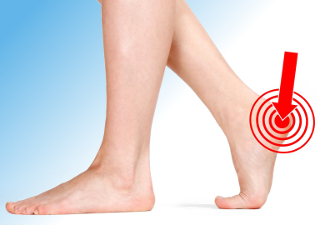by admin | Apr 27, 2012 | Conditions Treated
Sesamoiditis Is a common pain that affects the forefoot usually located just behind the big toe on the ball of the foot. Sesamoiditis generally means an irritation of the sesamoid bones, which are two tiny bones within the tendons that run to the big toe. Every time...
by admin | Apr 24, 2012 | Conditions Treated
Freibergs Infraction/ Osteochondritis Freiberg’s Infraction is an avascular necrosis usually of the 2nd metatarsal head, this means that there isn’t enough blood supply to the growth plate and is usually caused by repetitive microtrauma, which is why this...
by admin | Apr 13, 2012 | Conditions Treated
Retrocalcalneal Bursitis Retrocalcaneal is a very fancy name, which when broken down means swelling between the heel bone and the achilles tendon. A bursa is a sack of fluid that sits between a tendon and a bone to help the tendon move smoothly over the bone, with...

by admin | Feb 24, 2012 | Conditions Treated
Severs disease (also known as calcaneal apophysitis) is the most common cause of heel pain in children aged from 7-16 years old, with it more often than not seen in more boys than girls. It usually occurs in children who play a lot of sport is due to overuse and...
by admin | Feb 14, 2012 | Conditions Treated
Strapping the foot and ankle for ankle sprain treatment Ankle sprains/ strains are one of if not the most common sports injury to happen to the foot and ankle; according to the International Society of Clinical Rehabilitation Specialists. Not only does ankle injuries...
by admin | Feb 6, 2012 | Conditions Treated
Health Checks for the Diabetic Foot in Horsham & Horley What is Diabetes? Diabetes is a condition where the pancreas has either stopped making insulin, doesn’t make enough insulin or makes the wrong type which doesn’t work. You can either have Type I or type II...


Recent Comments